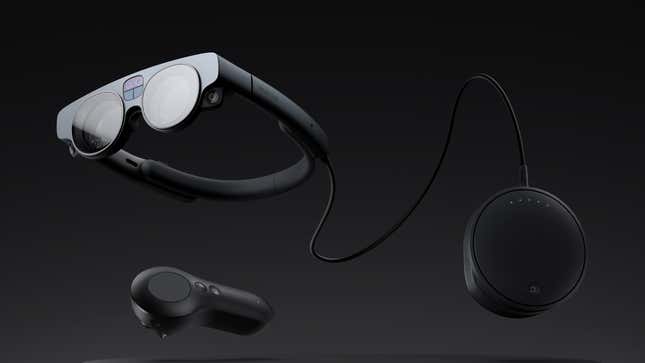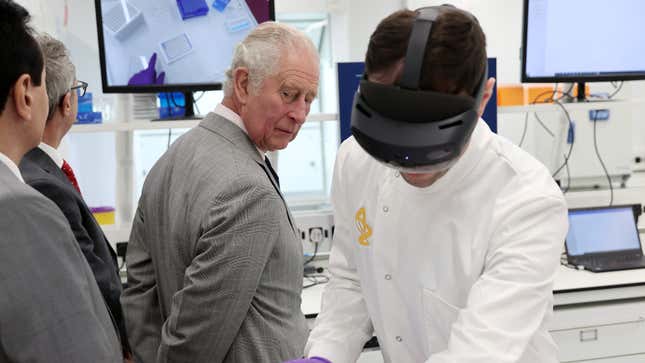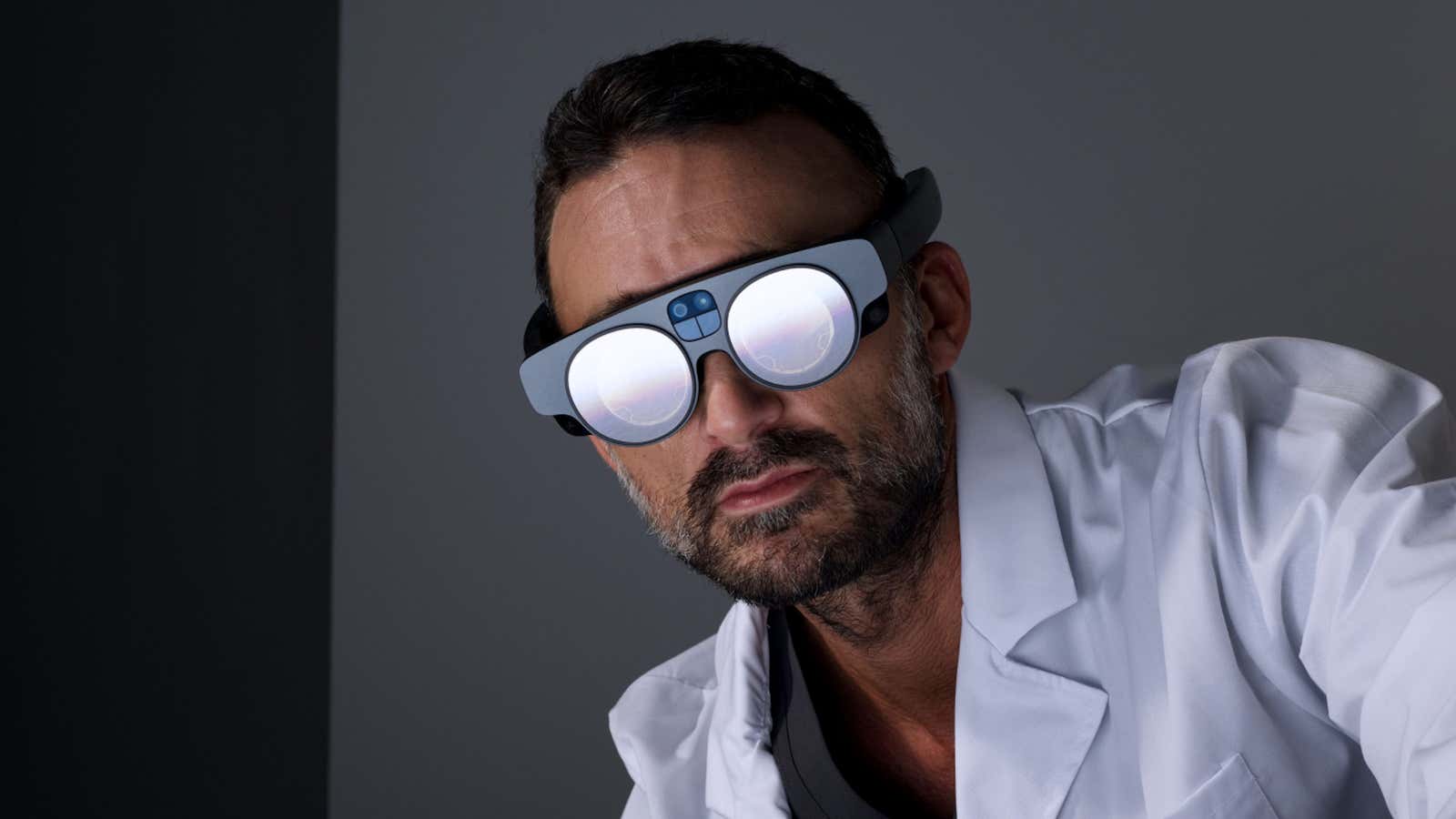The Magic Leap 2 has finally been given a release date and a price. It’s an updated version of the company’s augmented reality (AR) headset was that was teased in early 2020. But that was just prior to the pandemic and only a few months after the company’s founder, Rony Abovitz, stepped down as its CEO.
With Magic Leap, under the new leadership of Peggy Johnson, the headset gives Microsoft’s HoloLens 2 its first real AR device competitor. Like Microsoft’s headset, which was released in 2019 for $3,500, the Magic Leap 2 offers stable virtual object tracking and placement as well as hand tracking in AR, allowing users to easily manipulate virtual objects that appear in the real world through the headset.
The Magic Leap 2 stands out from the HoloLens 2 with its new dynamic dimming ability. It allows the developer of an immersive experience to either dim parts of a virtual environment, or completely black out the real world, leaving only the virtual objects viewable. That gives the Magic Leap 2 the ability to be used as a virtual reality headset too.
How the high-end AR landscape developed and changed in the last few years
When the Magic Leap 1 debuted in 2018, it was targeted at business and casual consumer users. However, much of the company’s marketing leaned heavily on entertainment in the form of interactive games and content consumption apps. It relied on the blockbuster universes of Star Wars, Harry Potter, and Game of Thrones to provide a glimpse at the future of immerse gaming. But the high price of the headset and limited consumer uses resulted in slow sales. The Information reported that the company had only sold roughly 6,000 units in its first six months of availability.

The early emphasis on entertainment rooted the device’s public profile as consumer-focused, despite its business applications. In late 2019, amid layoffs and doubts about the company’s future, Magic Leap shifted course by pitching its headsets to the medical, manufacturing, professional design, and military sectors.
It was too little too late. Soon, more layoffs were announced. Abovitz stepped down.
Johnson, a veteran of Microsoft and Qualcomm, was appointed as the company’s new CEO. She continued the mission to remake Magic Leap as a business-focused company with a rebrand and public campaign to put Magic Leap in direct competition with Microsoft’s HoloLens 2.
What businesses will get for their investments in the competing platforms
The new $3,299 price of the Magic Leap 2 is reflective of its efforts to be considered as the alternative to the HoloLens 2, which costs $3,500. The Magic Leap 1 cost $2,295, expensive, but still about $700 less than the $3,000 price tag of the HoloLens 1.
Of all the features packed in each headset, the most important for professional use is the design of the headset. The HoloLens 2, with its visor that can be easily flipped up and allows peripheral vision, is possibly a better fit for some business users compared to the enclosed goggles offered by the Magic Leap 2.
For example, on a factory floor with active machinery and sometimes tight spaces, the ability for a worker to maintain their peripheral vision with the HoloLens 2 could prevent injuries that Magic Leap 2’s more limited field of view might not. Similarly, the HoloLens 2’s flippable visor could make it easier for taking a moment away from the AR display to either examine something with the naked eye or to simply take a break.

Additionally, the HoloLens 2 operates without a tether to a hip-based computing unit like the Magic Leap 2, which potentially offers easier operations in some factory, medical, and military situations in which a tether might hinder the users’ movements. The HoloLens 2’s control unit is part of the rear of the headset, along with its battery and other wireless connectivity components.
“We really haven’t had much pushback at all on the corded [Magic Leap 2 design],” said Johnson told Quartz earlier this year. “Any safety issues with a cord, oftentimes, what happens is they’ll just wear it underneath a safety vest that they have to wear anyway.”
The other major advantage the HoloLens 2 has is its native connection to the Microsoft Azure cloud infrastructure, an instance of what is increasingly being called the metaverse. This tight integration means that the Azure cloud is optimized to provide remote rendering of virtual constructs on the HoloLens 2.
Also, Microsoft Mesh, which is built on the Azure cloud platform, allows HoloLens 2 users to collaborate in real-time remotely while experiencing and manipulating virtual presentations and design projects together. These functions are available to HoloLens 2 users immediately.
Magic Leap has developed several powerful software applications. Instead of deploying its own cloud platform, it opted to partner with Google Cloud. (Google was one of the company’s earliest investors.) for its own software offerings. “We are cloud agnostic,” said Johnson. “If a customer comes in, whoever their cloud partner is, we can work in that environment.”
There are less expensive AR alternatives for business users, such as Lenovo’s ThinkReality A3 ($1,500) and the Vuzix Blade ($1,000), but those devices don’t offer the visual and tracking features offered by the Magic Leap and Microsoft devices. The Magic Leap 2 goes on sale to business customers on Sept. 30.
